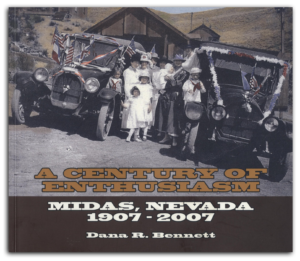GPR Study
Friends of Midas is responsible for maintenance of the historic Midas Cemetery, which was established in 1908.
Over the years, fire and theft took their toll on the cemetery, and grave markers have been lost. Only three granite markers have survived the years. Cemetery experts and local memories indicate that as many as 40 people may be buried there, but no one is quite sure where all of the graves actually are.
To locate historic graves, Friends of Midas contracted with Nevada’s highly respected Desert Research Institute (DRI) to conduct a survey using drone and ground-penetrating radar (GPR) technology in 2023. Led by geoarchaeologist Dr. Teresa Wriston, the DRI team conducted field work in Midas in August of 2023. Her team analyzed the field work to identify anomalies in the ground that may be burial locations. DRI’s report was presented to Friends of Midas in April 2024.
As the landowner, Elko County will utilize DRI’s work to map out acceptable sites for future inurnments and ensure that the historical sites are not inadvertently disturbed. A process will be established for the burial of ashes and installation of monuments. Thus, the Midas Cemetery will then be both an historic site and provide a continuing service to the community. Interpretive signage will be placed in the future to provide context for visitors and acknowledge the donors who funded the project.
The Midas Cemetery GPR Project was underwritten by major grants from Nevada Gold Mines and Patricia D. Cafferata, Esq., with generous support from Hecla Nevada, Stanley Paher, and Timberline Drilling.
For more information, please email FriendsofMidas@gmail.com


